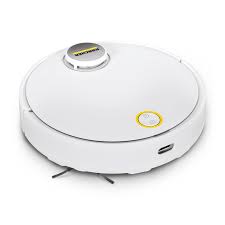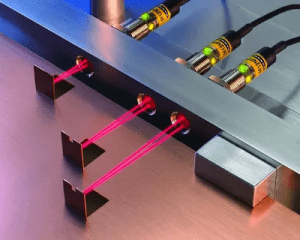
The Robotic Vacuum Cleaners Market is expected to reach $33.3 billion by 2031, at a CAGR of 26.9% from 2024 to 2031.
The Robotic Vacuum Cleaners Market is projected to reach $33.3 billion by 2031, growing at a CAGR of 26.9% from 2024 to 2031. This market expansion is driven by the increasing adoption of smart and connected home products, the rising demand for energy-efficient appliances, and growing disposable incomes. Additionally, the growth in internet-connected and voice-controlled robotic vacuums is expected to create new opportunities for market players.
Download free sample report here: https://www.meticulousresearch.com/download-sample-report/cp_id=5181
Robotic Vacuum Cleaners Market Growth Drivers
Increasing Penetration of Smart & Connected Products in Homes
The popularity of smart homes and appliances, including robotic and automated devices, is on the rise. These smart homes have interconnected devices controlled via the internet, managing security, temperature, lighting, and home theater systems.
The demand for robotic vacuum cleaners is increasing due to changing lifestyles and busy schedules, which make it challenging to maintain cleanliness. These cleaners come with advanced features such as navigation technology, voice control, and remote control, making them safe and eco-friendly. The integration of smart appliances into daily life offers comfort and efficiency, driving market growth.
The preference for easy-to-use appliances is growing among the tech-savvy population, particularly as women’s employment rates rise. Consumers favor robotic vacuum cleaners over manual labor due to high labor costs, and these devices are more effective and affordable. Pet owners, in particular, find robotic vacuum cleaners beneficial for quick and easy cleaning. These factors collectively support market growth.
Increasing Demand for Energy-efficient Appliances
The rising demand for energy-efficient appliances is fueled by economic growth, efforts to reduce carbon emissions, and improved energy security. Traditional appliances consume more power, whereas robotic vacuum cleaners are designed to be more energy-efficient, saving electricity expenses. These devices can work for 5 to 6 hours on a single charge and often feature battery power backups and automatic shutdowns to save energy.
Consumers are increasingly adopting energy-efficient appliances to reduce power usage and carbon emissions. Various countries are promoting green initiatives, such as green building guidelines and the Energy Conservation Building Code (ECBC), which support the adoption of energy-efficient appliances, including robotic vacuum cleaners.
Browse in depth: https://www.meticulousresearch.com/product/robotic-vacuum-cleaner-market-5181
Robotic Vacuum Cleaners Market Opportunity
Growth of Internet-Connected and Voice-Controlled Robotic Vacuums
The proliferation of internet-connected and voice-controlled robotic vacuums is a significant trend in home cleaning applications. These features provide ease of use, allowing users to control the vacuums via voice commands and apps, schedule cleaning sessions, receive software updates, and monitor cleaning progress remotely.
With artificial intelligence and machine learning integration, robotic vacuums are becoming more advanced, learning floor plans, adapting to obstacles, and personalizing cleaning routines. These devices, integrated with smart home ecosystems, enhance the cleaning experience through voice control and interaction with other smart devices, improving navigation and handling complex layouts. The demand for effortless cleaning, improved efficiency, and smarter home experiences is driving market growth.
Robotic Vacuum Cleaners Market Analysis: Key Findings
By Type
In 2024, the cleaning robots segment is expected to dominate the market, accounting for over 48% of the global share. The demand for smart and connected products, improved functionality without human interference, and the need for clean and hygienic homes contribute to this segment’s growth. Cleaning robots utilize technologies such as online home mapping, remote access, and anti-collision systems for efficient cleaning.
The hybrid robots segment is projected to register the highest CAGR, driven by the need for Wi-Fi connectivity, advancements in mopping technology, and a focus on hygiene. Hybrid vacuums offer a two-in-one solution, combining vacuuming and mopping.
By Distribution Channel
In 2024, the online segment is expected to account for over 83% of the market share, driven by the growth of e-commerce, convenience of home shopping, availability of various vacuum cleaners, and competitive pricing. Online platforms allow companies to showcase a wide range of products, attracting customers with different preferences. This segment is also projected to register the highest CAGR.
By Operation
In 2024, the self-driven segment is expected to dominate the market, accounting for over 68% of the share. The adoption of AI and IoT in robotic vacuums and innovations in sensors and internet connectivity support the demand for self-driven cleaners, which are cost-efficient and time-saving.
The remote-controlled segment is projected to register the highest CAGR, driven by the demand for AI-enabled vacuum cleaners and advancements in home appliance technology. Remote-controlled vacuum cleaners offer flexible positioning and movement on the floor and are equipped with handheld remote devices and transmitters for control signals.
By Price Range
In 2024, the USD 201 to USD 500 segment is expected to hold the largest market share, driven by the demand for features such as security cameras, advanced sensors, and mapping systems. These vacuums are compatible with Google Assistant and Amazon Alexa.
The above USD 501 segment is projected to register the highest CAGR, driven by investments in premium appliances, the popularity of smart home devices, and the demand for high-end vacuums with stronger suction power, better filtration systems, and specialized attachments.
By Application
In 2024, the residential segment is expected to dominate the market, accounting for over 78% of the share. The busy lifestyle of consumers, technological advancements, and increasing awareness of hygiene drive this segment’s growth. Innovations in the residential market, such as UV sterilization and security cameras, contribute to market expansion.
Geographical Analysis
In 2024, the Asia-Pacific region is expected to dominate the market, accounting for over 45% of the global share. The market growth in this region is driven by the importance of clean homes, the shift towards smart home appliances, and the availability of advanced products. The region is also projected to record the highest CAGR, driven by the higher purchasing power in countries like China and South Korea.
Buy now: https://www.meticulousresearch.com/Checkout/56393135
Key Companies
The report offers a competitive analysis of leading players based on product portfolios, geographic presence, and growth strategies. Key players in the market include iRobot Corporation (U.S.), ECOVACS Robotics Co., Ltd. (China), Beijing Roborock Technology Co. Ltd. (China), Anker Innovation Technology Co., Ltd. (China), Samsung Electronics Co., Ltd (South Korea), Shenzhen Proscenic Technology Co. Ltd. (China), Neato Robotics, Inc. (U.S.), Cecotec Innovaciones S.L. (Spain), LG Electronics Inc (South Korea), Dyson Limited (U.K.), Panasonic Corporation (Japan), and Sharp Corporation (U.S.).
Contact Us:
Meticulous Market Research Pvt. Ltd.
1267 Willis St, Ste 200 Redding,
California, 96001, U.S.
USA: +1-646-781-8004
Europe : +44-203-868-8738
APAC: +91 744-7780008
Email- sales@meticulousresearch.com
Visit Our Website: https://www.meticulousresearch.com/
Connect with us on LinkedIn- https://www.linkedin.com/company/meticulous-research







